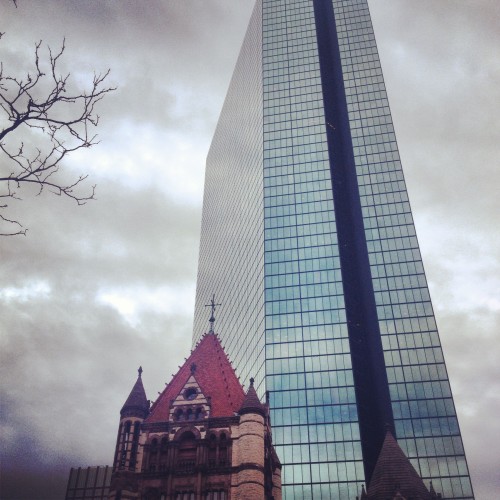I was hesitant to review Emily Rapp’s beautiful memoir, The Still Point of the Turning World, because I worried that writing about how I related to her story would trivialize what she experienced.
But the book haunted me. I couldn’t turn around, interact with my children, or look out the window without thinking of Emily and Ronan. And I decided that I wanted to at least try to express how powerful a book Rapp has written, with a deep bow and clear statement of tremendous humility about an experience that I can’t even come close to knowing.
The Still Point of the Turning World is about mothering a terminally-ill toddler. I know several people who say they can’t bear to read it, because of the subject matter.
But the thing is, The Still Point of the Turning World is really about how to live a life.
In prose that is clear and sometimes unflinchingly stark, Rapp tells the story of her son’s tragic diagnosis and of the months that follow. Every chapter has an epigraph, and that is only one way in which this book is strewn with references to literature. Over and over again Rapp cites phrases from poetry, prose, and nonfiction, religious and secular, modern and ancient. With these quotations she demonstrates both the depth of her own knowledge and the ways in which the written word can support us in times of anguish.
Rapp quoted many lines I know and love. As I read, I had Yeats’ The Second Coming so powerfully in my mind that I tweeted that I couldn’t get the falcon and the falconer out of my head. I guess it shouldn’t surprise me that two hours later, still reading The Still Point of the Turning World, I got to a passage where Rapp refers to that very poem, to the center not being able to hold, to things falling apart. She weaves references to literature through her story, making manifest her belief in “the power of stories to make life cohere, to create a necessary order around us, [which] can, in turn, help us fully live.”
Perhaps the single biggest criticism I receive of my writing is that it’s sad. This is where I worry that I’m skirting the line of disrespect; I intend no comparison whatsoever between my life and Emily Rapp’s. But it is true that my writing – and my living, by the way – is suffused with a sense of loss, with a very real sorrow about time’s passage. I can’t get past that feeling, much as I wish I could. As I read The Still Point of the Turning World I finally understood why. When I read this sentence, I gasped, underlined, and proceeded to read it again a hundred times: “rendering loss is a way of honoring life.”
Yes. That is a truth that beats in my veins as surely as my own blood. It is the story I can’t stop telling.
Rapp asserts the irrevocable omnipresence of loss and grief, and perhaps more importantly, the writer’s role in our human experience of it:
This is precisely why grief, like love and any other foundational, deceptively simple human emotion or state of being, is the terrain of artists. And it is a writer’s even more specific job to give voice to loss in whatever ways she can, to give shape to this unspeakable, impermeable reality beneath all other realities.
In Ronan, Rapp meets her greatest teacher. He doesn’t experience his own life as tragic or as doomed. It is simply what it is. As Rapp describes their day to day routines, their walks on the arroyo path and his sitting in his bouncer chair, we see the calm intimacy that fills even these deep, jagged lacunas of grief. Whole scenes in the book bear witness to the fact that “there existed within this helpless, frantic sadness exquisite moments of pristine happiness and an almost-perfect peace.” Ronan embodies “that rare, raw enchanting experience that many of us render impossible because we analyze and criticize and categorize what we see and think and feel: wonder,” and his pure, without-agenda engagement in this world is a revelation and an example.
Even though life with Ronan is full of hurt, anger, and pain, it is also beautiful. When Rapp says that in mothering Ronan she learned about “the joys and costs of refusing to look away” I found myself emboldened, inspired, enormously moved. The Still Point of the Turning World closes with Rapp concluding that Buddhism, which “instructs its followers to be at ease, always, with not knowing, with uncertainty,” may be the belief system that resonates with her the most. Life is uncertain, we inadvertently brush up against the gossamer border between this world and another every day, and all we have is this bounty and barrenness spread before us. Of course I can’t imagine with how many more orders of magnitude having a terminally ill child brings this truth home, but I do know it is true for all of us.
There is heartbreak and deep, unthinkable, apocalyptic sorrow at the heart of The Still Point of the Turning World. But believe me when I tell you this is one of the most life-affirming books I have ever read. It tells me what I’ve always known, but in words more passionate, eloquent, and convincing than I’ve ever had. It tells me the three words that are the only tattoo I would ever get: be here now.

